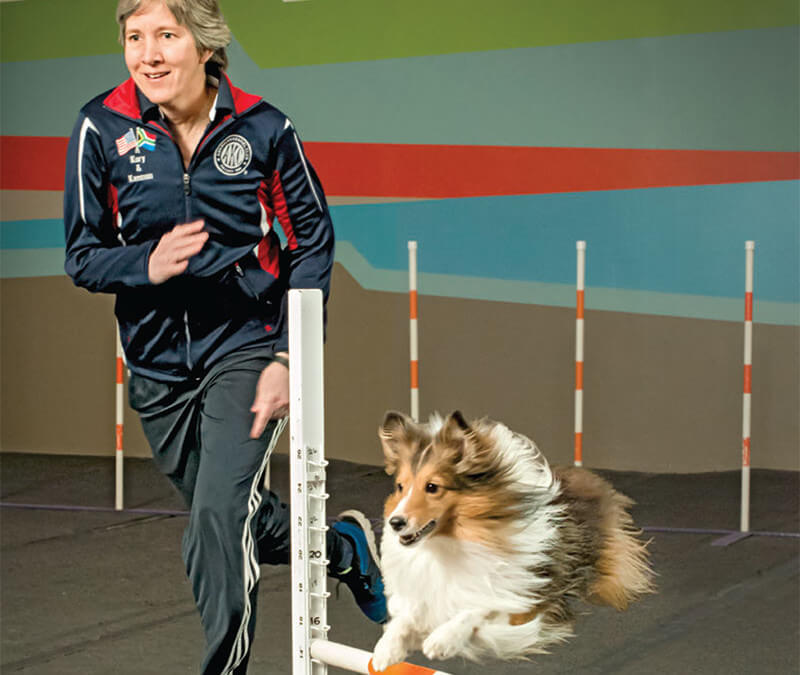Reprinted with permission Minnesota Medicine, March 2015 edition. Text by Kim Kiser, photo by Mike Krivit.
Kory Kaye, MD, strides onto the agility course at Twin Cities Obedience and Training Club (TCOTC) in northeast Minneapolis with a little brown-and-white Shetland sheepdog at her side, looking intense.
She gives the command to go, and the dog takes off running. Kaye runs alongside, directing him over hurdles, into tunnels, across a long bridge and through a slalom course. “Good boy,” she says and rewards him with a piece of cheese—“the paycheck”—for his effort. “Dogs love the sport,” she says. “And the humans tend to really like it, too.”
Kaye, who works in the emergency department at Regions Hospital, is clearly one of them. “The reason I like agility is because it’s a game of strategy,” she explains. Participants face a unique course at every competition, “so you can’t just run the same course over and over and get faster and faster.” Rather, you study the map, walk it and think through how to best approach the obstacles in a way that capitalizes on your dog’s strengths. “Within a second a dog can be on the wrong side of an obstacle,” she says, adding that dogs successfully run the course less than half the time. “The typical pass rate is about 40 percent.”
Kaye and her dogs are currently preparing to compete in the American Kennel Club’s 2015 Agility World Team tryouts in May—the sport’s equivalent of the U.S. Olympic trials. Over the years, they have competed throughout the United States and internationally. In 2011 and 2014, she and 7-year-old Keyme represented the United States at the European Open World Championships in Austria and Hungary (they took sixth place in the individual competition in 2014). She and 4-year-old Kaemon represented the United States at the FCI Agility World Championships in 2013 in Johannesburg, South Africa (they won the silver medal in the individual competition and were part of a bronze-medal winning small-dog jumping team).
Kaye grew up with dogs but stumbled onto agility by accident. After she got her first Sheltie pup in 1989, she started obedience training (her mother had been showing dogs in obedience). “It became the thing my mother and I did on Monday night,” she says. “It was nothing more than that.” Then one thing led to another, and Kaye began competing in obedience.
About five years later, the sport of agility came along. “I showed in the first AKC agility trial, which happened to be in this building,” she says of the TCOTC facility. “I did it initially to support the club, but did pretty well. You get a couple of placement ribbons and the next thing you know, you’re addicted.” She now teaches agility at TCOTC—hoping to pass her love of the sport on to others.
Kaye says competing with dogs and practicing emergency medicine have similarities: Both are exciting and both require her to make decisions quickly and react to ever-changing situations. Agility, she says, “has all the highs and lows of the emergency department, but if something goes terribly wrong on an agility course, no one dies.”

